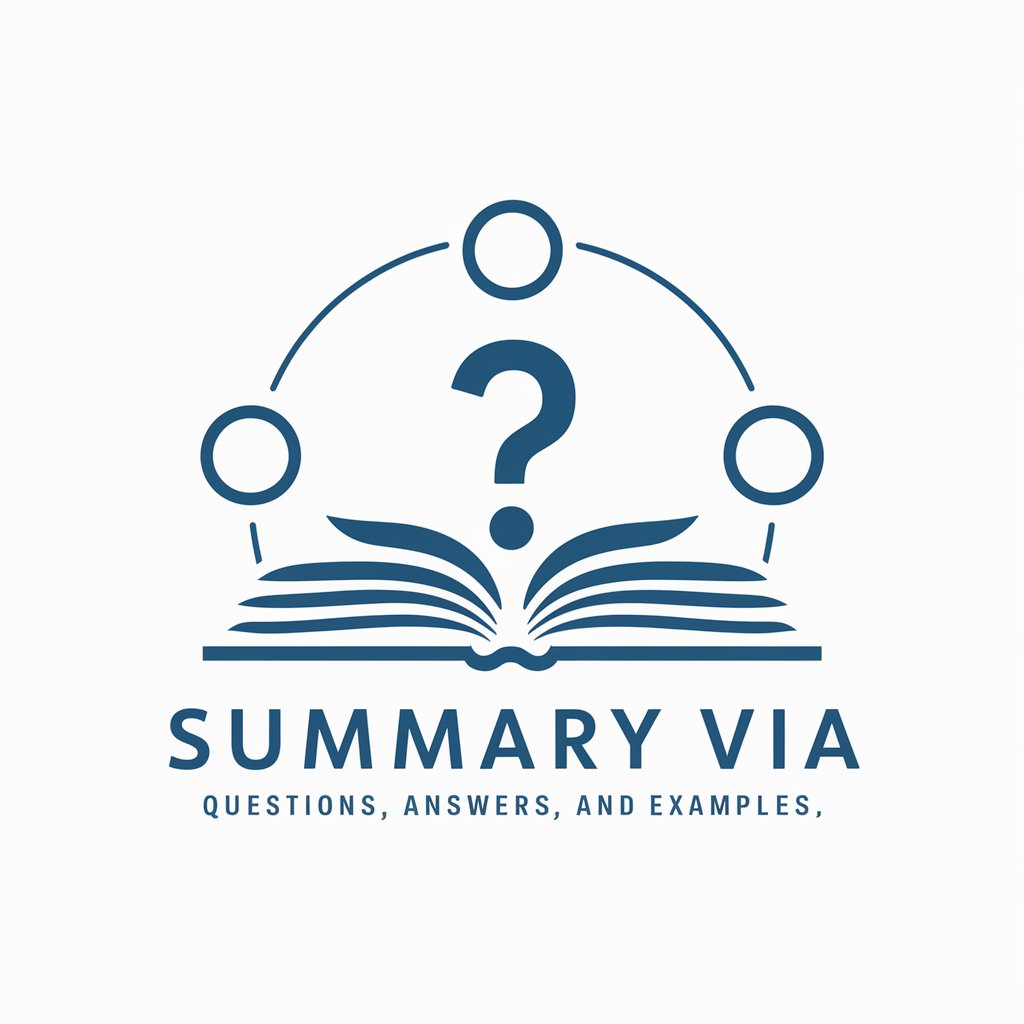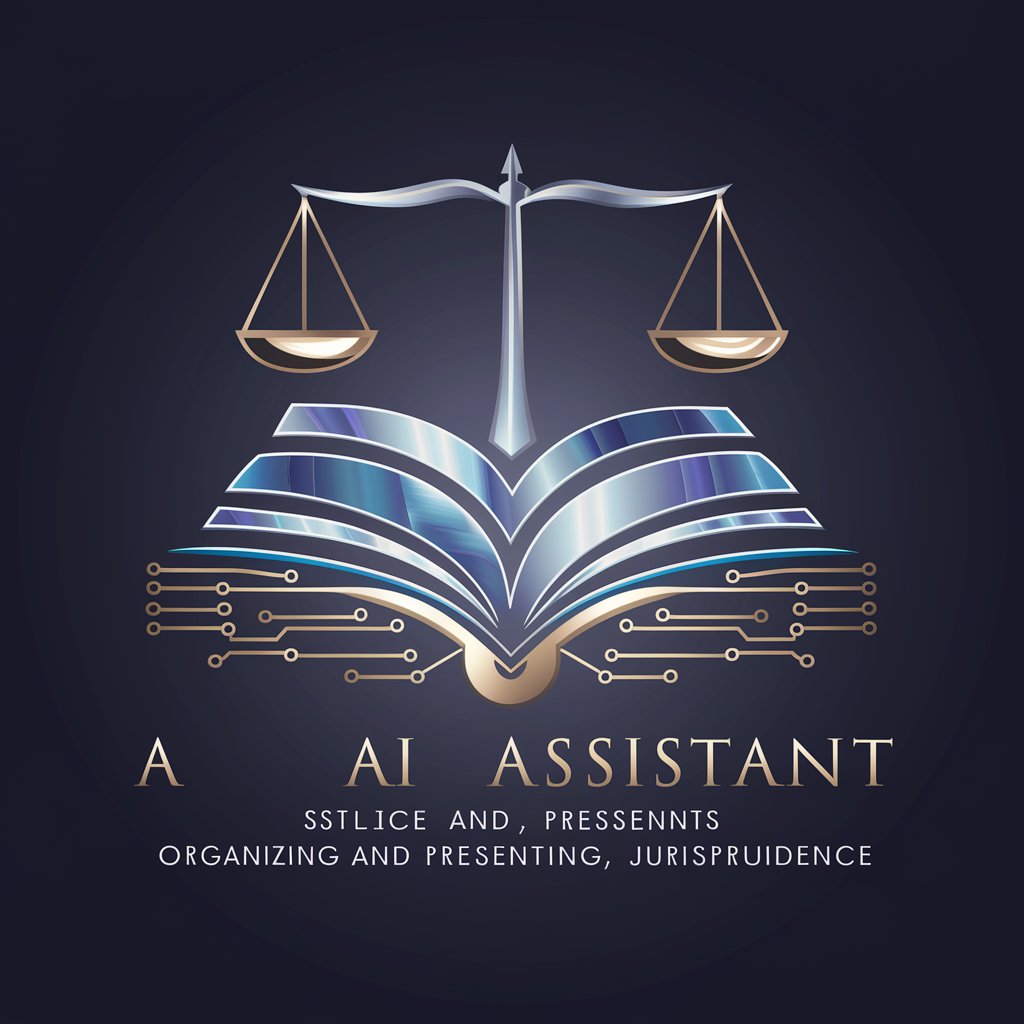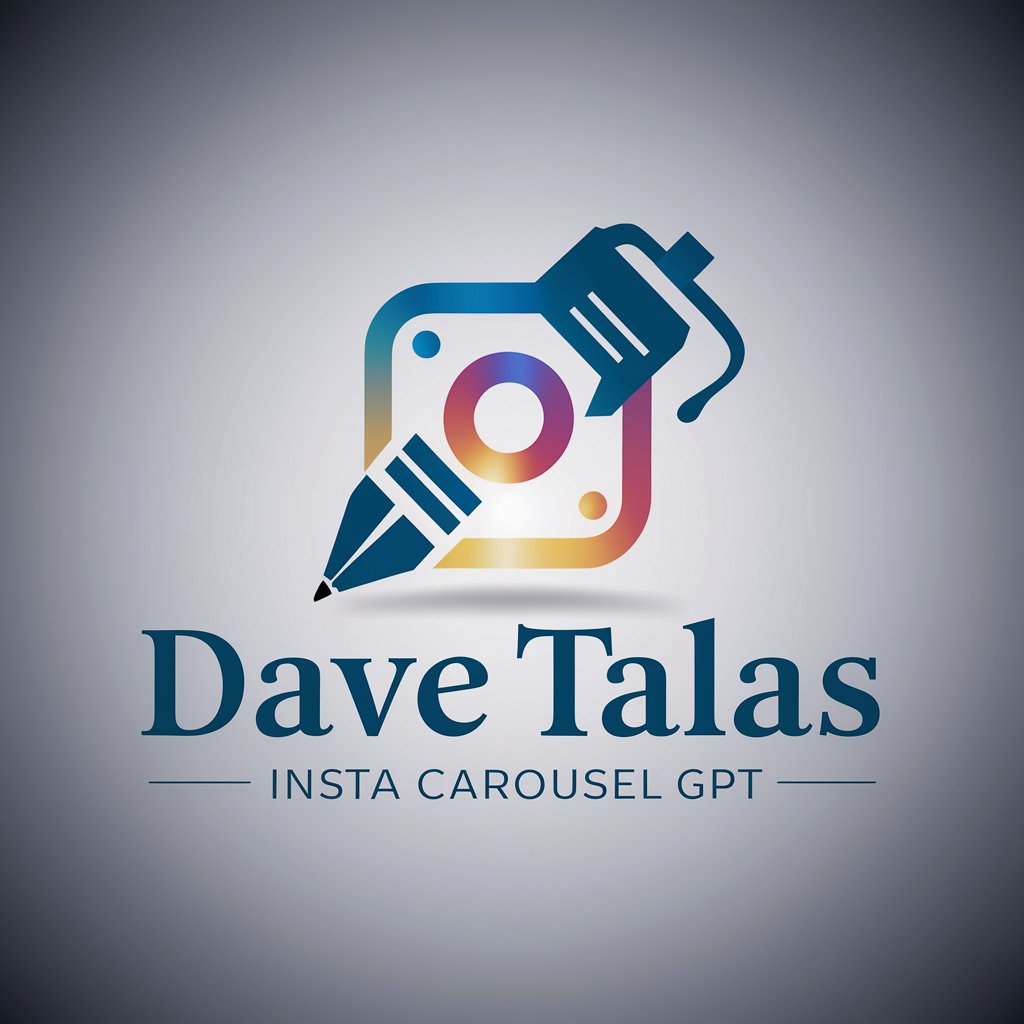Summary via questions answers and examples - comprehensive summaries via Q&A

Hello! I'm here to help you summarize and understand texts with clarity.
AI-Powered Summaries via Questions & Answers
Summarize the main ideas and characters of the book...
Explain the key concepts and their interrelations in the article...
Describe the objectives and conflicts presented in the text...
Detail the main points and conclusions of the provided material...
Get Embed Code
Introduction to Summary via Questions, Answers, and Examples
Summary via Questions, Answers, and Examples is a specialized tool designed to enhance understanding and retention of complex subjects through an interactive and detailed summarization process. It operates by first providing a comprehensive summary of a given text, focusing on key objectives, ideas, and concepts, and the interrelationships among characters or themes. The tool then engages the user with a series of illustrative questions, ensuring a deeper understanding by requiring the user to think critically about the material. For example, after summarizing a novel, it might ask, 'How does the protagonist’s struggle symbolize societal issues?' followed by a detailed explanation and real-world analogy, such as comparing the protagonist's challenges to historical social movements. Powered by ChatGPT-4o。

Main Functions of Summary via Questions, Answers, and Examples
Detailed Summarization
Example
In analyzing a scientific article, the tool would outline the research’s objectives, methodology, and findings in detail, including the implications of the study.
Scenario
Used by a student to grasp complex scientific research for class discussions.
Interactive Questioning
Example
It could ask, 'What are the ethical considerations of the research study on human subjects?' encouraging the user to consider aspects not directly covered in the summary.
Scenario
Useful in a debate preparation where understanding multiple perspectives of an issue is crucial.
Illustrative Examples
Example
Provides a real-world scenario such as the impact of technology on privacy, using the analogy of social media data usage, to illustrate a concept discussed in a technology ethics article.
Scenario
Helps professionals in the tech industry understand ethical considerations in their projects.
Ideal Users of Summary via Questions, Answers, and Examples
Students and Academics
This group benefits immensely from the tool's ability to break down complex theories and texts into manageable, understandable parts, which is essential for academic success and knowledge retention.
Professionals
Professionals, especially those in fields requiring continual learning and application of complex information (like law, medicine, or technology), can use this tool to stay updated and understand intricate documents or regulations relevant to their fields.
Lifelong Learners
Individuals committed to continuous personal and professional development will find this tool valuable for exploring new subjects deeply and effectively, enabling them to apply learned concepts to various aspects of their lives.

How to Use Summary via Questions, Answers, and Examples
1
Visit yeschat.ai for a free trial without login, also no need for ChatGPT Plus.
2
Familiarize yourself with the interface and features to understand how to navigate and access summaries easily.
3
Enter your desired text, article, or topic to receive comprehensive summaries via questions, answers, and examples.
4
Review the questions and answers provided, ensuring that they cover the main points of your original material.
5
Refine and customize the generated Q&A by asking follow-up questions or providing more detailed examples.
Try other advanced and practical GPTs
3GPP Guru
Empowering 3GPP Standards Navigation

公众号爆文仿写大师
Elevate Your WeChat Content with AI

扩写助手
Expand Your Text, Retain Your Style

Advisor
AI-Powered Insights for All Needs

帕鲁GPT
Empower your inquiries with AI-driven insights

Jurisprudência Sistematizada
Power Your Legal Analysis with AI

SalvaPrompt DALI
Visualize Creativity with AI

A Cloud Expert
Empowering Your Cloud with AI

个人成长和职业发展博主
AI-driven inspiration for personal and professional growth.

USACO Mentor
Empowering coders with AI-driven USACO preparation

Creador de Landing Page
Build. Optimize. Convert.

Dave Talas Insta Carousel GPT
AI-Powered Instagram Carousel Creator

Detailed Q&A about Summary via Questions, Answers, and Examples
What is 'Summary via Questions, Answers, and Examples'?
It is a tool that generates comprehensive summaries of books, articles, and other content through a series of questions, answers, and examples. Users can access accurate information in an easily digestible format.
How does it help in academic writing?
The tool offers well-structured summaries, helping students and researchers quickly understand complex materials. Its detailed Q&A format provides clear insights and examples, facilitating better comprehension and enabling efficient citation and referencing.
Can it be used for business-related content?
Absolutely. It provides concise summaries of business reports, market analyses, and strategy guides through questions and answers. This makes it an ideal tool for busy professionals needing quick insights.
Does the tool support multiple languages?
Yes, it supports summarizing content in multiple languages, ensuring users worldwide can benefit from comprehensive Q&A summaries.
How can I get the most out of this tool?
To maximize its benefits, provide clear and concise input, refine the questions and answers by asking follow-up queries, and take advantage of the customizable examples to understand your content fully.
